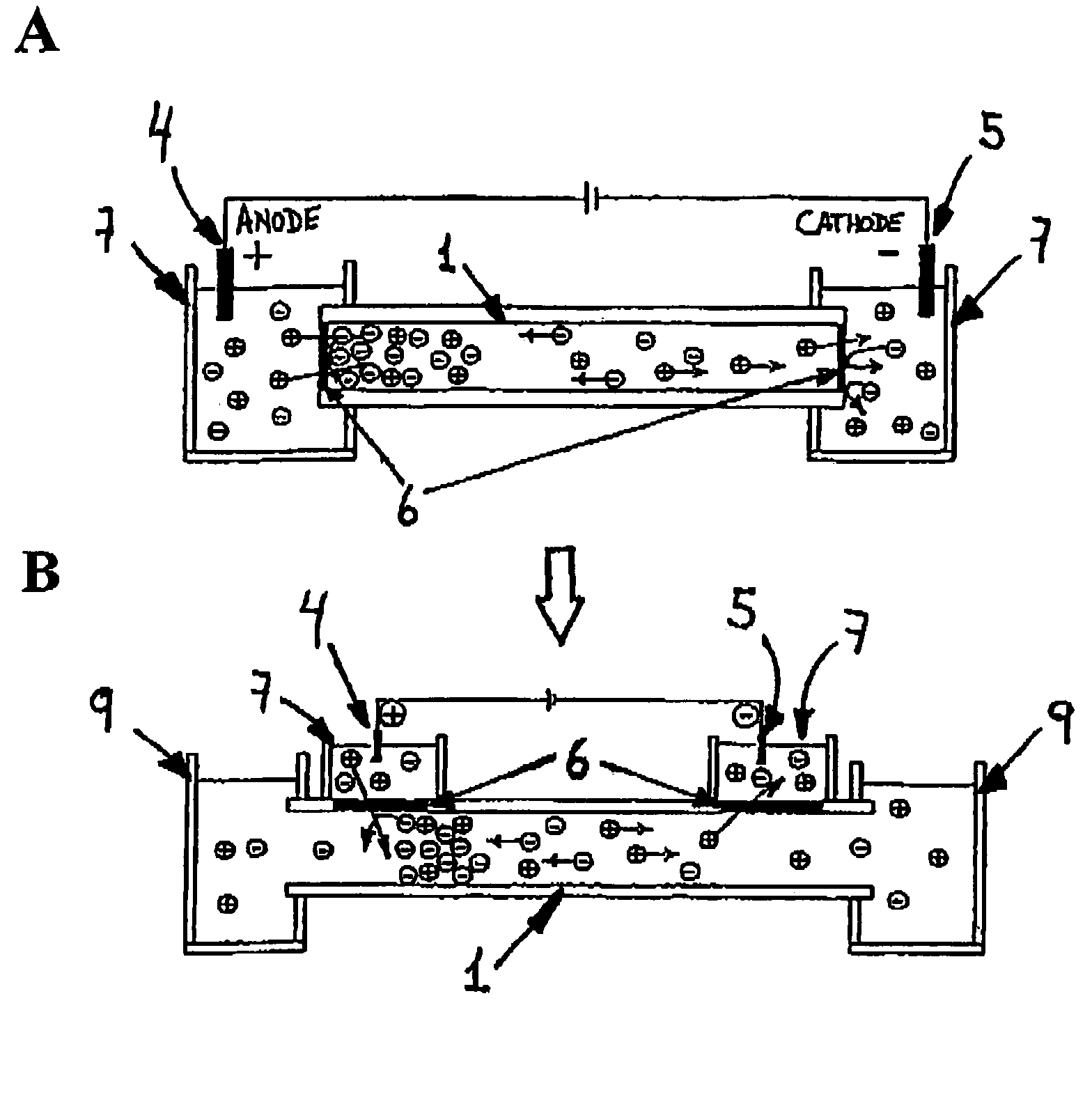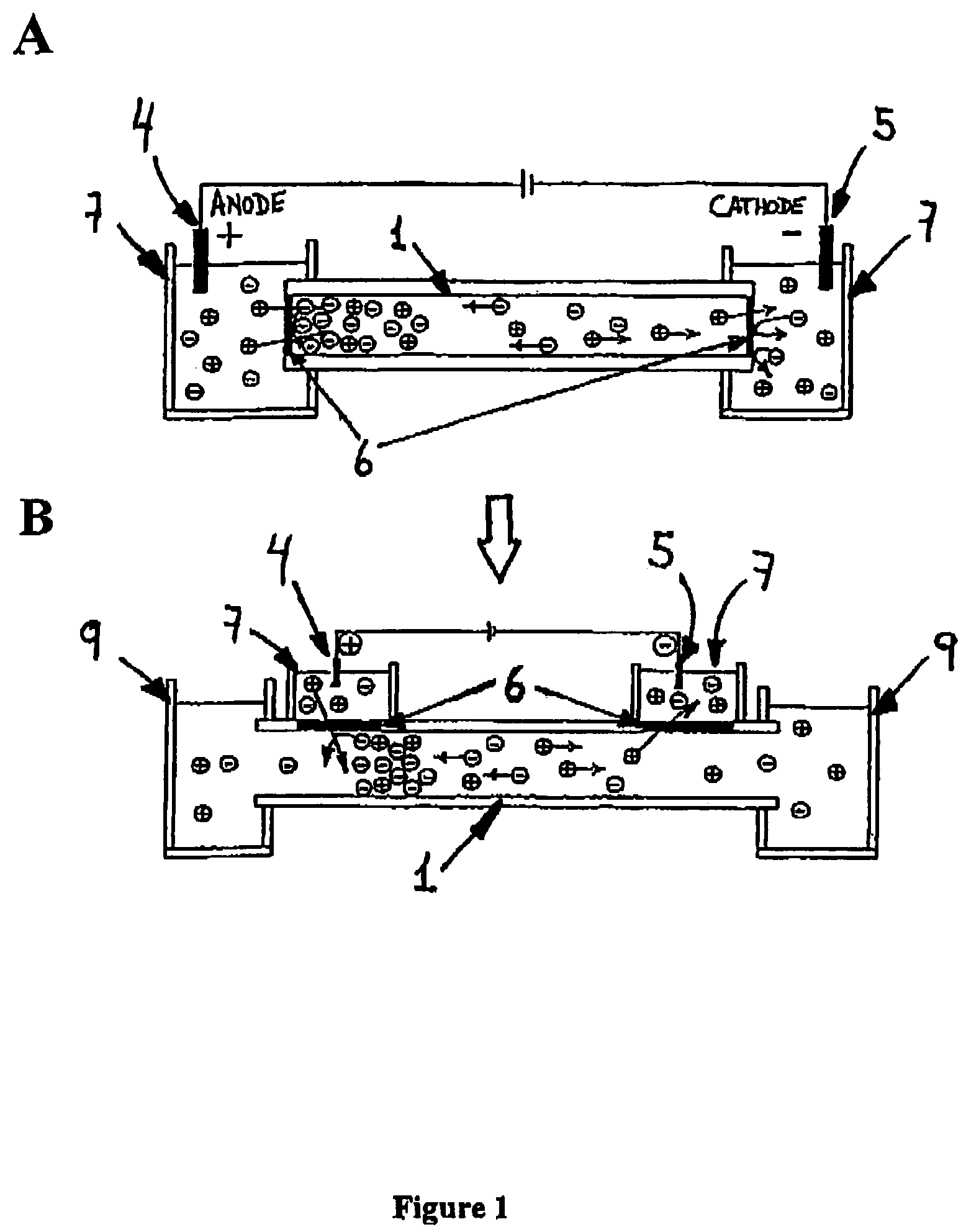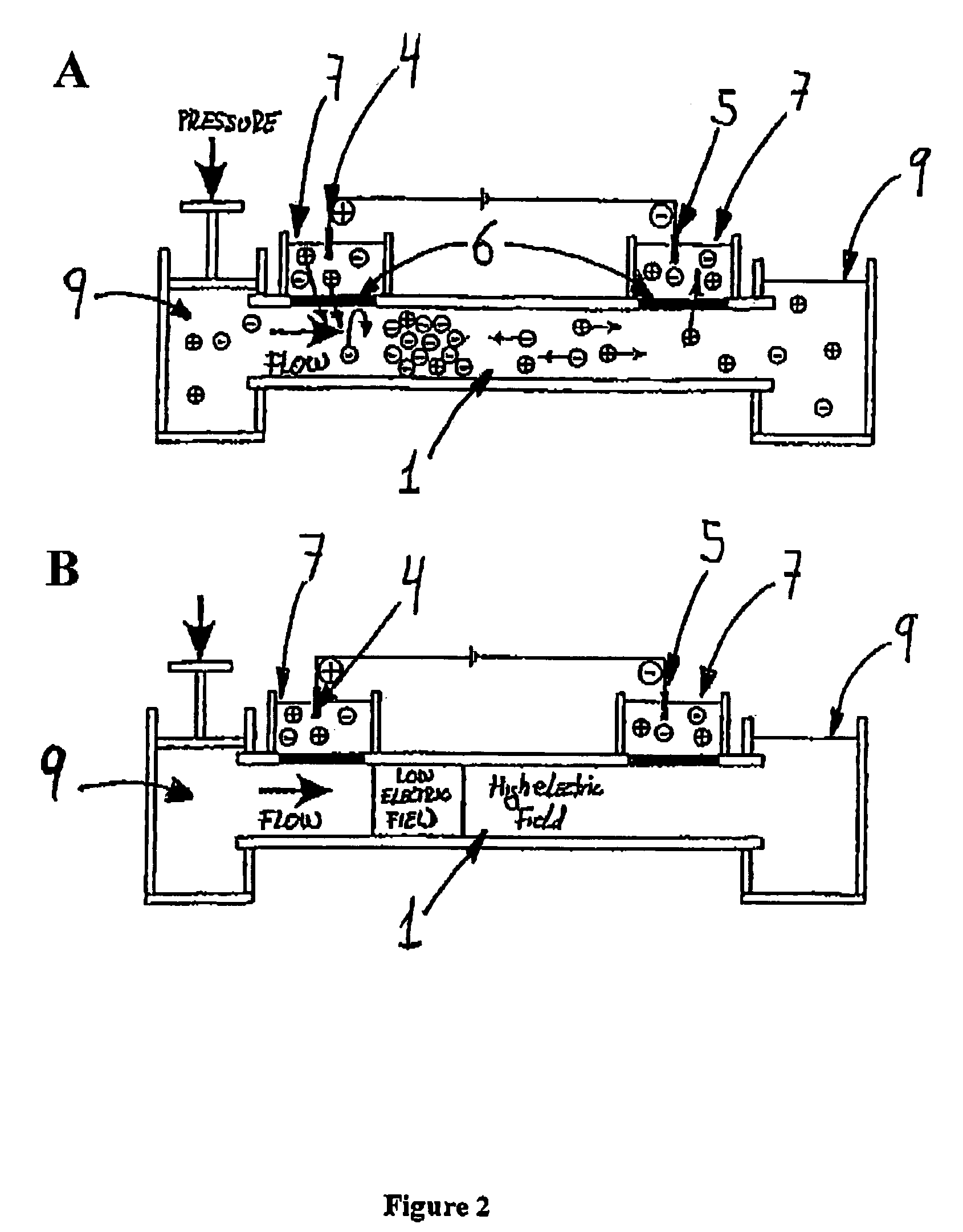Method for capturing charged molecules traveling in a flow stream
a flow stream and charge technology, applied in the field of capturing charged molecules traveling in flow streams, can solve the problems of reducing the amount of reactants, reducing the total cost of assays, and difficulty in mixing two or more solutions (reagents and substrates), and achieve the effect of simple construction
- Summary
- Abstract
- Description
- Claims
- Application Information
AI Technical Summary
Benefits of technology
Problems solved by technology
Method used
Image
Examples
example 1
Experimental Evidence for the Membrane-Based Stacking Principle
[0118]In order to validate the theoretical principle, a device that contains all desirable characteristics outlined in the theoretical part was built and tested.
[0119]The system consists of a micrometer size flow channel made of PEEK tubing, which has two gap junctions covered by a cation-selective conductive membrane. The junction zones are placed into separate electrode buffer chambers. The PEEK tubing serves as electrophoretic channel and the cation-selective conductive membrane will not permit the exchange of anions between the buffer chambers and the fluidic channel. A syringe pump connected to the channel produces a flow stream (FIG. 3). Theoretically, having the anode at the upstream junction, negatively charged molecules will be attracted towards the upstream electrode and trapped there by the capture device.
[0120]The electrical junctions are made of Nafion tubing. Nafion is a poly(tetrafluoroethylene) polymer th...
example 2
Capture of Proteins
[0144]To compare the movement of slow anions with the theoretical model by visual observations, colored proteins such as myoglobin and hemoglobin were captured in the device (FIG. 6).
[0145]The protein band can be moved along the channel by changing the voltage or flow rate. For a given voltage, the protein band is situated more upstream if the flow rate is decreased (with lower overall current value) while the band is swept downstream if the flow rate is increased, resulting in higher overall current value. The maximum flow rate when the protein band is no longer captured was found to be 0.4 μL / min for an electric field of 187 V / cm (FIG. 6). This is in general agreement with the maximum current value, at 0.5 μL / min (FIG. 4). From these data, it can be assumed that at 0.4 μL / min the low conductive zone, which produces the stacking effect, is as short as possible to still achieve the capture effect, and at higher flow rates the band is swept out from the system. Aft...
example 3
Capture of DNA
[0147]In order to optimize the voltage and flow rate values, a solution of DNA was injected continuously into the device. An UV absorbance detector was positioned at the outlet of the device. Under this configuration, a decrease of the absorbance values represents that DNA is being captured. For optimization, different values of voltage were tested using a constant flow rate. A successful capture of DNA can be seen in FIG. 7. A decrease in the UV absorption at the detector shows that DNA is being captured. As soon as the electric field is turned off, a sharp band of the released DNA is observed.
PUM
| Property | Measurement | Unit |
|---|---|---|
| volume | aaaaa | aaaaa |
| pH | aaaaa | aaaaa |
| flow rates | aaaaa | aaaaa |
Abstract
Description
Claims
Application Information
 Login to View More
Login to View More - R&D
- Intellectual Property
- Life Sciences
- Materials
- Tech Scout
- Unparalleled Data Quality
- Higher Quality Content
- 60% Fewer Hallucinations
Browse by: Latest US Patents, China's latest patents, Technical Efficacy Thesaurus, Application Domain, Technology Topic, Popular Technical Reports.
© 2025 PatSnap. All rights reserved.Legal|Privacy policy|Modern Slavery Act Transparency Statement|Sitemap|About US| Contact US: help@patsnap.com



